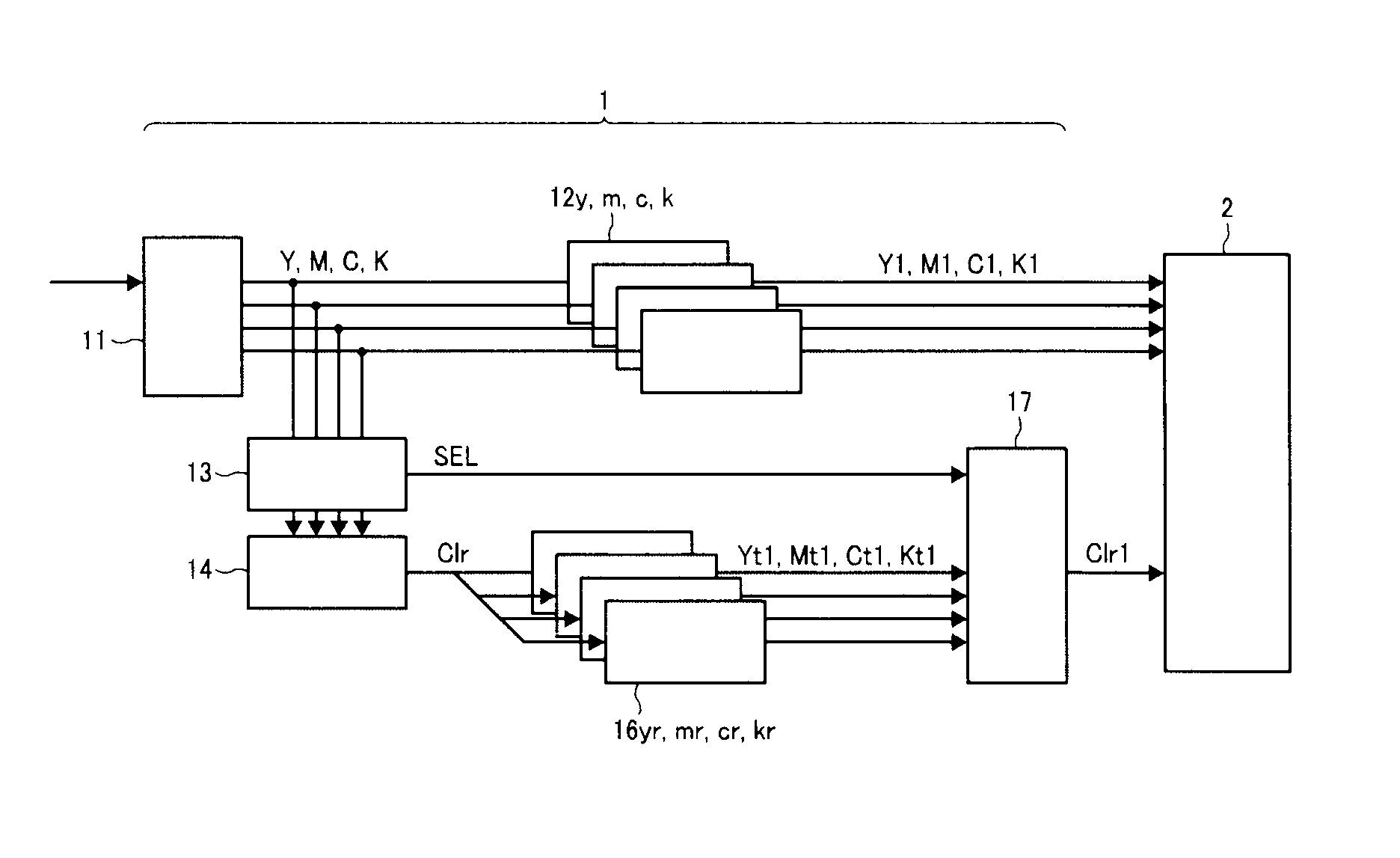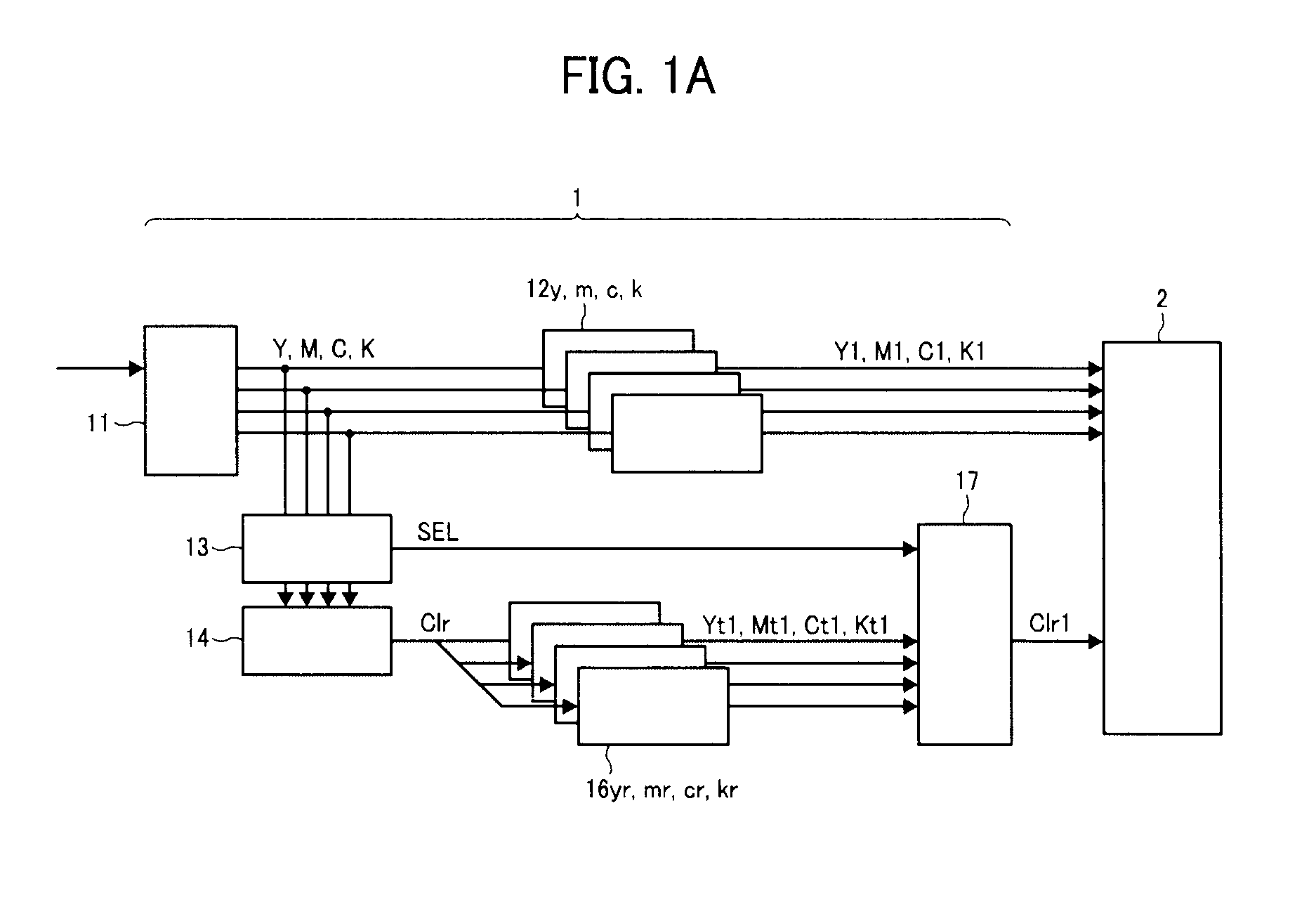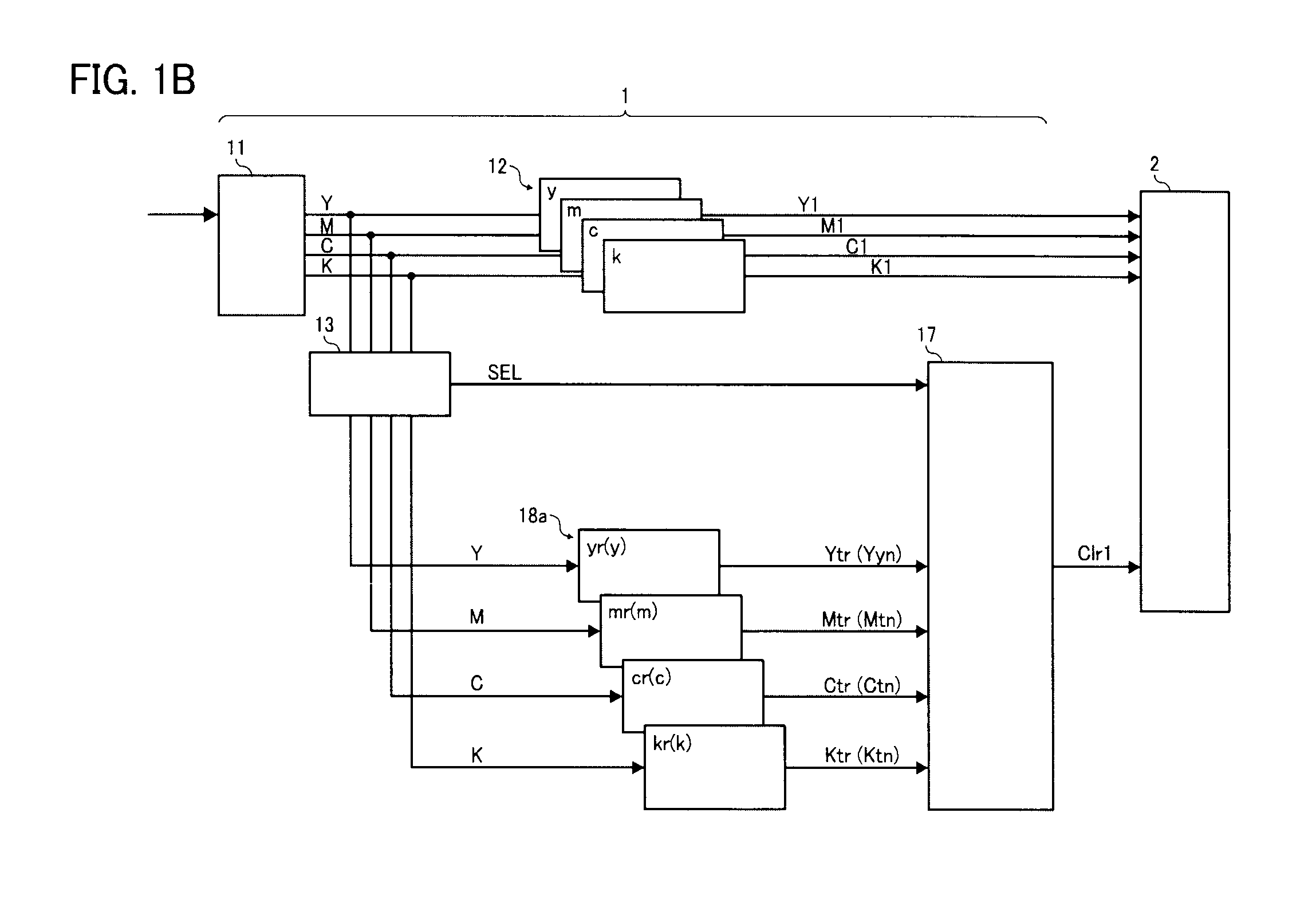Controller and halftone dot signal generating method capable of controlling glossiness of image
a technology of controller and halftone dot, which is applied in the direction of visual presentation, instruments, computing, etc., can solve the problems of degrading the image quality, affecting the image quality, and the inability of conventional electrophotographic equipment or commercial printers to directly reproduce halftone images using halftone toner
- Summary
- Abstract
- Description
- Claims
- Application Information
AI Technical Summary
Problems solved by technology
Method used
Image
Examples
first embodiment
[0028]Referring now to the drawing, wherein like reference numerals designate identical or corresponding parts throughout several views, in particular in FIG. 1A, an electrophotographic system is described. Initially, it is herein below premised that a dither method is employed to apply binary processing and form a halftone dot having a popular dot screen shape per pixel, so that the halftone can be virtually expressed. It is also premised that mirror gloss of an image is typically sixty degrees. As shown, the electrophotographic system is roughly separated into two parts of a printing controller 1 and a printer engine 2. The printing controller 1 includes a known raster image processing (RIP) unit 11, multiple halftone dot signal generators 12y, 12m, 12c, 12k of respective Y, M, C, K component colors, and a main component color specifying device 13. Also included in the printing controller 1 are a clear toner image information generator 14, multiple clear toner image clear toner im...
second embodiment
[0058]Hence, even though amplitudes of convexoconcavity of dy, dm, dc, and dk of the YMCK component color image information are close to each other, and accordingly the maximum value thereof and the signal SEL frequently change in a halftone image region, which is expressed by YMCK component color image information pieces and especially requiring a smoothness, a clear toner image becomes stable maintaining the above-described advantages. Specifically, since a signal SEL of a pixel having great effect on a convexoconcavity of a superimposed halftone image to be printed and those of its surroundings are averaged, the signal SEL is not frequently changed. As a result, halftone dot printing of the clear toner can be stabilized, and a smooth image is obtained.
[0059]A size and density of the pixel is not limited to that as described above, and an optional size and density can be employed. The dither matrix and halftone dot can employ the other characteristics, and composition of the clea...
third embodiment
[0080]The main component color specifying device 13 of the third embodiment is advantageous when amplitude “d” of the convexoconcavity is not largely different between component colors in pixels having the same coordinates with a simple structure.
[0081]Now, a first modification of the second embodiment of an image forming apparatus is described with reference to FIG. 9B. An image forming apparatus of this embodiment has substantially the same configuration and operates substantially in the same manner as the second embodiment, but modifies the clear toner image halftone dot generating and outputting device 14. Specifically, the clear toner image halftone dot generating and outputting device 14 generating a raster image for clear toner image processing is omitted. However, a unit of third halftone dot signal generators 18b (y, yr, m, mr, c, cr, k, and kr) is provided as a clear toner image halftone dot generating and outputting device to generate clear toner image halftone dot signal...
PUM
 Login to View More
Login to View More Abstract
Description
Claims
Application Information
 Login to View More
Login to View More - R&D
- Intellectual Property
- Life Sciences
- Materials
- Tech Scout
- Unparalleled Data Quality
- Higher Quality Content
- 60% Fewer Hallucinations
Browse by: Latest US Patents, China's latest patents, Technical Efficacy Thesaurus, Application Domain, Technology Topic, Popular Technical Reports.
© 2025 PatSnap. All rights reserved.Legal|Privacy policy|Modern Slavery Act Transparency Statement|Sitemap|About US| Contact US: help@patsnap.com



